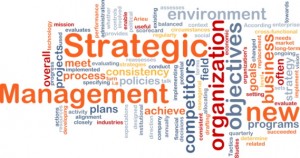How often have you heard an IT leader say they want a position that’s “more strategic” and “less operational?”
The reality is that there is always a balance of both, depending on the level you work at in your organization. Sometimes, it’s not the balance you’d like to see.
Me too.
As the CIO, my typical day is back to back meetings. Plus, I squeeze in email and phone calls on a range of additional issues. I read and answer email well into the evening after I get home.
In the past week, I’ve reviewed presentations and read articles on health care in the future and how technology enables innovation: reflective thinking and planning. I’ve participated in a day long strategic planning retreat for the board of our health information exchange, Great Lakes Health Connect. I’ve worked with my leadership team and key customers to map out the next stage of our electronic health record deployment. And I’ve solidified a plan for a much needed security program review.
At the same time, I’ve dealt with several messy operational issues: departmental systems with less than optimal vendor contracts, security risks, poor architecture, and interoperability challenges.
There are common themes as to why these operational issues persist:
- It’s not clear who owns the problem and who is accountable for it
- Issues are not tracked systematically through to resolution
- Non-compliance with standards, and standards that are missing
- Lack of formal project management or “project management by email”
- Technology decisions made without proper review
- Reliance on vendors who don’t deliver
- And, the complexity of our environment
Every successful CIO has a strong leadership team that effectively handles operations and drives projects to completion. An effective, high functioning IT department needs to have the fundamental standards, policies, processes and governance in place and working well.
I’ve been in my current role almost two years now. I rolled out my initial organizational changes a year ago. My executive leadership team is solid and working well together. As a department, we do a lot of excellent work and support a significant infrastructure and 24/7 operation for over 26,000 users.
Yet, we continue to uncover significant problems and gaps. I expect we will be uncovering more for some time to come.
UMHS will continue to grow in size and complexity. The health care landscape will continue to evolve. Technology will continue to advance. As IT professionals, we have to do our best to lead with innovation while we effectively support the basic infrastructure and operations.
Like most CIOs, I wish for less operational issues. But I’m a realist. “Plan for the future, manage for today.”

Vic on said:
Sue. Thanks for the insight into C-level life. I am curious to know if you use a strategy for handling email. Or you have some rules of thumb.
Sue Schade on said:
Vic, great question! I certainly don’t have the silver bullet on email. I find some key Outlook rules help – ones where I’m just copied “CC” go to separate folder for less immediate review and emails from external sources (all the “push” emails) I get go to separate folder to do quick “batch” review when I have time. These two rules help me focus on what’s in my inbox that really needs my attention. For that, constantly triaging and prioritizing ones I need to address quickly vs take time to read later and answer. That said, the volume is hard to keep up with!
Donna Fraser on said:
HI Sue: I will save this post …….because you described the source of operational isses so accurately! Those themes are universal. thanks – I will not recreate the wheel.
Sue Schade on said:
Donna, themes are universal indeed. Glad you could relate.
Karthik Ramachandran on said:
Great article Sue…. Do you think it would be viable to move all of the decision making and complete operational responsibility down to your first line leadership and focusing on just strategy at the c-level?
Karthik
Sue Schade on said:
Karthik, Great question. I worked in a model at Partners HealthCare with CIO who focused on strategy and vision, deputy CIO who focused on operations. My organizational model has 5 executive directors responsible for their divisions. Usually operational issues that come to me are the escalations where CIO level help is needed to work with a vendor or customer leader. Workable model in my opinion.